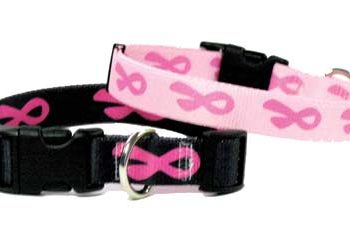Not every dog going through chemo has bad reactions, but a lot of them have one thing in common and that’s an aversion to eating. In the many years that I’ve been working with dogs and diets to help them, cancer patients are arguably the ones who taught me most about behavioral changes. Owners are understandably overwhelmed by the diagnosis of cancer, the schedule back and forth to the vet for treatments and follow-up, expense and ongoing fear. So, when the dog refuses to eat, it seems like all the effort and progress made to this point was pointless. But we don’t give up. Although there isn’t a one size-fits-all-solution, at least one (and hopefully more) of these things can help your dog:
1. Change the diet (be sure it’s balanced for a dog with cancer rather than feeding a generic diet). Dogs can associate feeling nauseous with something they ate in the past that seemed to have caused the nausea, and if that something happens to be the usual diet, food aversion happens quickly.
2. Change the feeding bowl. A flat plate can seem attractive to a dog who usually eats from a bowl. I’m pretty sure it’s not the shape of the feeding utensil that makes a difference so much as the old bowl may be perceived as “bad” if nausea occurred after eating from it. Some dogs refuse any type of feeding utensil, but will eat food off a place mat on the floor.
3. Sometimes an area of a room or even an entire room becomes a “bad place”. Negative experiences like nausea and vomiting may be related to that location, so the easy answer is to change locations. Try another place in that same room, or feed the dog in another room.
4. Change the texture of food. If soft foods are usually fed, try something crunchy like dehydrated bits of meat sprinkled over regular food, crushed rice cake (just a little), etc. If hard foods are usually fed, switch to soft foods like boiled chicken, poached fish, etc.
5. Try a different temperature of food. Warm it up, or try it cold. Most dogs prefer warm food, but some are eager even for some frozen foods like peas, or a frozen ice cube of chicken broth to lap at.
6. The sense of smell may be altered for some dogs. Stronger scents seem to gain attention in these cases. Try a drizzle of canned sardine juice on food, a sprinkle of Parmesan cheese, dollop of tomato paste, baby food (chicken in broth is a favorite), or poach liver in a good amount of water, so you can drizzle the liver juice on food. Freeze leftover broth in an ice cube tray for easy warm-up as needed.
7. Sometimes going with what works can help to break the streak of refusing food. A hamburger from a fast food restaurant may not be a healthy choice, but it beats not eating at all. Toast with a little peanut butter, almond butter, or even a little honey can turn things around. Dogs tend to have a sweet tooth and although we want to curb foods that high in simple carbohydrates, you’re in this for the long term and feeding the odd food that isn’t on the menu can make a positive change.
8. Keep life interesting. Dogs are masters at body language, and when you worry, the dog worries too. Feeding a bite of cheese with a combination of dread and hope is unlikely to give positive results. Make it a happy game. Hid a pill in cheese? First tiny bite has nothing it in, second bite has nothing in it, third has the pill and fourth has nothing in it again. Big praise, happy dance, belly rubs, and now let’s try a new game, or toy, or just some cuddle time.
Be sure to feed a diet that’s correct for your particular dog and his/her health challenges and keep your chin up. You can do this! For more information, read our canine cancer diet section.

